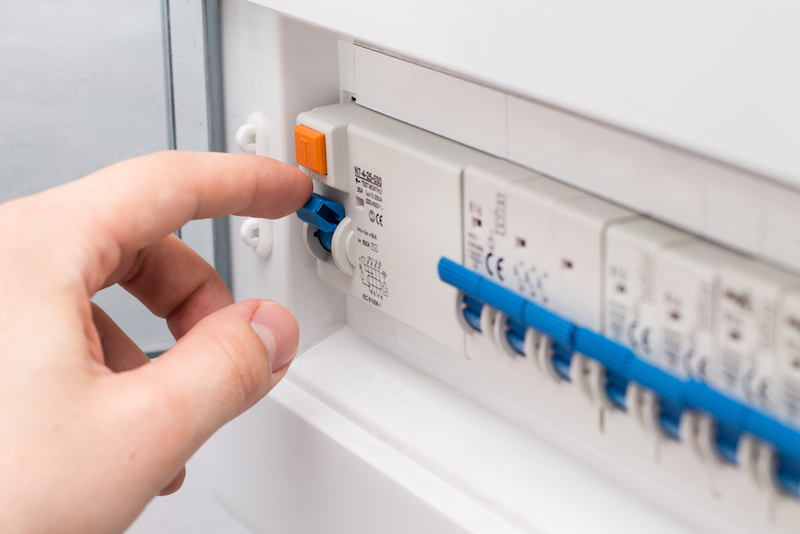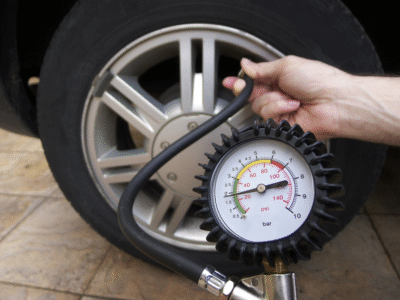
Where Is Ford Focus Fuse Box: A Complete Owner’s Guide

If you've ever had an electrical issue with your Ford Focus — say, your headlights flicker or your power windows suddenly give up — chances are, you’ve been told to “check the fuses.” Sounds simple, right? Until you open the hood and start wondering… where exactly is the fuse box?
Don’t worry. We’ve all been there — crouched with a flashlight, fumbling through plastic covers, muttering under our breath. In this guide, we’ll walk you through every location of the Ford Focus fuse boxes, what each one controls, and how to safely inspect or replace a fuse. Let’s dive right in.
- Understanding the Fuse Box in a Ford Focus
- How Many Fuse Boxes Does a Ford Focus Have?
- Where Is the Fuse Box on a Ford Focus?
- Ford Focus Fuse Box Locations by Year
- How to Access and Replace a Fuse
- Common Fuse-Related Issues in Ford Focus
- Signs of a Blown Fuse in Your Focus
- The Fuse Box Diagram – Your Roadmap
- Why Knowing Fuse Box Locations Matters
- Safety Tips When Handling Fuses
- What Tools You’ll Need
- Troubleshooting Electrical Problems Beyond Fuses
- Comparing Ford Focus Fuse Box to Other Models
- Keeping Your Fuse Box Healthy
- Conclusion – Finding and Understanding Your Ford Focus Fuse Box
- FAQs – Ford Focus Fuse Box
Understanding the Fuse Box in a Ford Focus
Before we start yanking covers and inspecting wires, let’s quickly understand what the fuse box actually does.
Your Ford Focus fuse box acts as the electrical gatekeeper. It prevents short circuits and overloads from frying vital systems like your radio, headlights, and engine management. Think of it as the bodyguard of your car’s electrical system — silent, reliable, and always on duty.
How Many Fuse Boxes Does a Ford Focus Have?
Every generation of the Ford Focus typically includes two or three fuse boxes, depending on the model and year. Here’s a breakdown:
- Passenger Compartment Fuse Box – Usually located under the dashboard or glove box.
- Engine Bay Fuse Box – Found in the engine compartment, near the battery.
- Luggage Compartment Fuse Box (in some models) – Usually hidden behind a side panel in the trunk.
Where Is the Fuse Box on a Ford Focus?
Let’s pinpoint their exact locations so you don’t spend your afternoon hunting.
1. Engine Bay Fuse Box (Power Distribution Box)
- Location: Open the hood and look to the left (driver’s side) near the battery.
- Appearance: A black rectangular box with a clip-on lid.
- Access Tip: Press the clips on the sides and lift the cover gently.
- Main Functions:
- Engine control systems
- Headlights and cooling fans
- ABS (anti-lock braking system)
- Starter motor and ignition relay
This is the “heavy-duty” fuse box — it handles high-amperage circuits.
2. Passenger Compartment Fuse Box
- Location (Left-Hand Drive): Beneath the steering wheel, behind a plastic panel or glove box.
- Location (Right-Hand Drive): Behind the glove compartment or under the dashboard near the pedals.
- Main Functions:
- Power windows and mirrors
- Interior lighting
- Radio, navigation, and climate controls
- Central locking system
Pro Tip: If your infotainment screen, windows, or A/C stop working, this is the first place to check.
3. Luggage Compartment Fuse Box (if equipped)
- Location: On some Focus models (especially hatchbacks or wagons), you’ll find a fuse panel behind the side panel of the trunk, near the rear light cluster.
- Functions:
- Rear wiper
- Trailer lights
- Fuel pump
- Heated rear window
Not all models have this one, but when they do, it often hides behind a removable trim cover.
Ford Focus Fuse Box Locations by Year
Let’s break it down generation by generation — because the location can slightly vary.
Ford Focus Mk1 (1998–2004)
- Engine Fuse Box: Near the battery on the left side.
- Interior Fuse Box: Below the steering wheel, behind the trim panel.
Ford Focus Mk2 (2005–2011)
- Engine Fuse Box: Behind the battery, under the hood.
- Passenger Fuse Box: Under the glove box; remove the trim for access.
Ford Focus Mk3 (2012–2018)
- Engine Fuse Box: In the engine compartment, left-hand side.
- Cabin Fuse Box: Below and to the left of the steering wheel (left-hand drive models).
- Luggage Fuse Box: On the right side of the trunk (for some trims).
Ford Focus Mk4 (2019–Present)
- Engine Fuse Box: Close to the front left strut tower.
- Interior Fuse Box: Under the dashboard on the driver’s side.
- Rear Fuse Box: Right side of luggage compartment (depending on trim).
How to Access and Replace a Fuse
Changing a fuse is one of those quick DIY fixes that feels empowering once you’ve done it right. Here’s how:
You may be interested in reading Complete Guide to Replacing the Headlight Bulb in a Mitsubishi Mirage
Complete Guide to Replacing the Headlight Bulb in a Mitsubishi MirageStep-by-Step Fuse Replacement
- Turn Off the Ignition: Never mess with live electrical circuits.
- Locate the Correct Fuse Box: Refer to your owner’s manual or this guide.
- Remove the Cover: Use your fingers or a flat screwdriver to release clips.
- Identify the Fuse: Use the diagram inside the lid or manual.
- Pull the Fuse Out: Use a fuse puller (usually included in the lid) or tweezers.
- Inspect the Fuse: A broken or melted metal strip means it’s blown.
- Replace It: Match the amperage rating (never use a higher one).
- Reinstall the Cover and Test: Turn your car on and see if the problem’s fixed.
Even a simple fuse problem can mimic major electrical failures. Here’s what to watch for:
1. Blown Fuses
- Usually caused by short circuits or overloads.
- Replace with the correct amp rating only.
2. Loose Fuse Connections
- Over time, vibrations can loosen connections.
- Gently press fuses down to ensure they’re snug.
3. Corrosion in Fuse Box
- Often due to water leaks in the cabin or engine bay.
- Look for greenish residue or moisture.
- Clean carefully and dry before replacing.
Signs of a Blown Fuse in Your Focus
Sometimes, your car gives you hints. Here’s how to tell if a fuse might be the culprit:
- Electrical component suddenly stops working (radio, window, etc.)
- No power to accessory circuits
- Certain warning lights flash unexpectedly
- Burning smell from under the dashboard
If several systems fail at once, it’s likely a main fuse in the engine bay.
The Fuse Box Diagram – Your Roadmap
Each fuse box comes with a diagram that’s your key to understanding what’s what.
You’ll usually find it:
- Printed on the underside of the fuse box lid
- Inside your Ford Focus owner’s manual
- Online via Ford’s official service site
It lists fuse numbers, their amp ratings, and the systems they protect.
Why Knowing Fuse Box Locations Matters
It’s not just about fixing a dead radio. Knowing where your fuse boxes are can:
- Save you money on simple electrical fixes
- Help you diagnose bigger issues before calling a mechanic
- Prevent panic during nighttime failures
Simply put, a few minutes of knowledge can spare you hours of frustration.
Safety Tips When Handling Fuses
Because electricity isn’t something to take lightly:
- Always disconnect the battery if replacing high-amp fuses.
- Never use metal tools when pulling fuses — use plastic ones.
- Replace covers securely to prevent moisture intrusion.
- Keep spare fuses of different ratings in your glove box.
What Tools You’ll Need
You don’t need a mechanic’s toolbox. Here’s a quick checklist:
- Fuse puller or tweezers
- Flashlight
- Spare fuses (5A to 30A)
- Small screwdriver (for covers)
- Owner’s manual
Troubleshooting Electrical Problems Beyond Fuses
If new fuses keep blowing, it’s not random luck — it’s a sign of a deeper issue. Possible causes include:
You may be interested in reading Complete Guide to Replacing the Headlight Bulb in a Mitsubishi Mirage
Complete Guide to Replacing the Headlight Bulb in a Mitsubishi Mirage Mitsubishi Mirage Wiper Blade Size and Replacement Guide (All Years)
Mitsubishi Mirage Wiper Blade Size and Replacement Guide (All Years)- Short circuits in wiring
- Faulty switches or relays
- Moisture or corrosion buildup
- Overloaded accessory circuits
If you’re replacing the same fuse repeatedly, see a qualified auto electrician.
Comparing Ford Focus Fuse Box to Other Models
Ford’s layout is fairly intuitive compared to many compact cars. For instance:
- Chevrolet Cruze: Fuse box hidden under floor trim — less accessible.
- Toyota Corolla: Single fuse panel inside cabin — fewer high-current fuses.
- Honda Civic: Similar dual layout but smaller engine bay housing.
The Focus, thankfully, balances accessibility and protection pretty well.
Keeping Your Fuse Box Healthy
Here are a few maintenance tips:
- Inspect fuses annually during routine service.
- Keep fuse covers clean and dry.
- Avoid overloading circuits with aftermarket devices.
- Use dielectric grease to prevent corrosion.
Think of it like brushing your car’s “electrical teeth.”
Conclusion – Finding and Understanding Your Ford Focus Fuse Box
So there you have it — your ultimate guide to where the Ford Focus fuse boxes are located and how to handle them confidently. Whether you’re driving a classic Mk1 or a brand-new Mk4, the principle remains the same:
Locate, inspect, replace, and protect.
It’s a small detail, but one that can save you big headaches. Once you know your fuse box layout, you’ll handle electrical hiccups like a pro.
FAQs – Ford Focus Fuse Box
1. How many fuse boxes are in a Ford Focus?
Most Focus models have two to three fuse boxes — one in the engine bay, one inside the cabin, and sometimes one in the trunk.
2. What fuse controls the radio in a Ford Focus?
Usually, it’s located in the passenger compartment fuse box, labeled under “Audio” or “Multimedia.” Check your owner’s manual for exact fuse number.
3. What happens if I replace a fuse with a higher amp?
Bad idea — it can overheat and cause wiring damage or even fire. Always match the original amperage rating.
4. My fuse keeps blowing — why?
You may have a short circuit, damaged wiring, or faulty components drawing too much current. Don’t just keep replacing the fuse — find the root cause.
You may be interested in reading Complete Guide to Replacing the Headlight Bulb in a Mitsubishi Mirage
Complete Guide to Replacing the Headlight Bulb in a Mitsubishi Mirage Mitsubishi Mirage Wiper Blade Size and Replacement Guide (All Years)
Mitsubishi Mirage Wiper Blade Size and Replacement Guide (All Years) Complete Guide to Replacing the Front Wheel Bearing on the Mitsubishi Mirage 1.2L
Complete Guide to Replacing the Front Wheel Bearing on the Mitsubishi Mirage 1.2L5. Can I drive with a blown fuse?
It depends. Minor circuits like your radio can wait, but if it’s a fuse for headlights, brakes, or the ignition, it’s unsafe to drive until replaced.
If you want to know other articles similar to Where Is Ford Focus Fuse Box: A Complete Owner’s Guide you can visit the category Service and Parts.
Deja una respuesta






More content of your interest